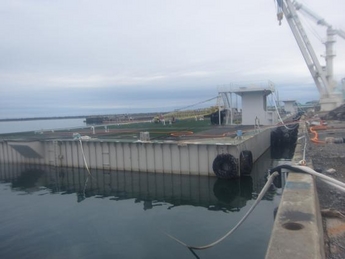Japanese utility TEPCO has published a forecast of the effect of its new water treatment system at the damaged Fukushima Daiichi nuclear power plant.

It expects that the height of water flooding the turbine building of units 1-4 will have declined by 1 metre to about 2.75 metres above OP by the end of September 2011, assuming 80% availability of the treatment system. Across all four reactors, three pumps reduce the total water level by about 100mm per day. About 100,000 m3 of water currently floods units 1-4.
TEPCO said that the primary purpose of the pumping operation in the short term was to maintain water levels below the 4 metre-mark to reduce the risk of water leaking into the sea. In the medium term, the plan to reduce water below the 3 metre-mark will keep sufficient reserve, and maintain the water below groundwater level, so that contamination will not leach into soil. It also points out that extra tanks for low- and medium-level contaminated water, currently being constructed, should help reduce water levels.
Also, an evaporative desalination plant is due to start operation on 1 August, TEPCO said, that will help increase the amount of freshwater available to inject into reactor units 1, 2 and 3. The concentrated saltwater produced by this plant will be stored in tanks of its own. As of the end of June about 13,000 m3 of storage space is available; storage space will continue to ramp up ahead of demand to about 32,000 m3 of space in August to about 76,000 m3 by the end of September, according to TEPCO's projections.
The report was prepared for the Japanese regulator.
The water treatment system, which started up on 27 June, has been affected by a series of pipe and connection leaks over the past few days.
In other news, pumping of about 8000 m3 of low-level contaminated water was due to begin today at units 5&6 to a large-capacity barge, the 'megafloat', moored inside the unit's breakwater. The water will be transferred from an outdoor temporary tank to the 10,000 m3 capacity-barge over the next three to four months.
Also, TEPCO has begun injecting nitrogen into the unit 2 primary containment vessel to reduce the risk of hydrogen explosion. It is already injecting nitrogen into unit 1, and has plans to do the same at unit 3.
Related ArticlesPaladin in discussions with investors




